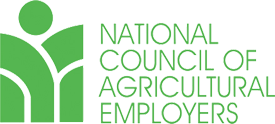Safety Issues
Why do Safety Issues matter?
A baseball game; the bottom of the ninth inning, the home team is down by one run, a player on third waits to come home for the tie, the player on second hopes to score the winning run. The batter hits the ball sharply past the second baseman. The runners drive for home, SAFE says the umpire once, SAFE he says the second time. The home team wins, the game is over, victory is celebrated.
Coming home SAFE. Easy to take for granted. Easy to think of as something that will always happen without intentional planning and management. Far too easy to forget for that one tragic, or even fatal, split second that changes life forever. In baseball, coming home safe and winning the game are the result of skill, training, practice, and good management. Winning baseball clubs never leave winning to chance or luck. The same discipline should be true of safety for every Harvester operation, from the smallest part-timer, to the largest multi-state/multi-national enterprise.
Statistically, agricultural work is classified as a dangerous occupation. According to the U.S. Department of Labor (DOL) farmers and ranchers have the fourth highest fatal injury rate among occupations, with only fishing, logging, and aviation being higher! Because of this, there is tremendous pressure from state and federal elected and regulatory officials to expand and increase the regulation and enforcement activity into all agricultural work. DOL is not alone, State and Federal DOT regulators look at us, agriculture, as likely Farm and agricultural accidents kill or maim our friends, neighbors, and family members every year. Can anyone who has been in agriculture for most of their life state that they do not have a family member, friend, neighbor, or other acquaintance who has been killed or suffered some permanent injury on the job? The personal costs and family tragedies are terrible enough. In addition to the personal cost, every time someone allows him/herself, or another, to be involved in an agricultural accident there are huge and looming “costs” and “losses” to the entire agricultural community. Whether we personally know the victims or not, every time young people are killed or maimed, we lose part of the future of agriculture. Every time a Harvester, family member, visitor, or employee is involved in an accident American agriculture loses people, time, produce, money, and reputation. Every agricultural related accident we read about pushes us closer to more and more regulatory burden on farm and other agricultural operations. These costs are only added to the terrible burden that everyone who has had such an accident related to their business carries with them for the rest of their lives.
“Safety is no accident”— “nearly all accidents are preventable”— these are true statements and everyone has a responsibility to take the necessary precautions to prevent agricultural accidents; for yourself, for your family and friends, for the future of agriculture. In addition to personal/family considerations, as employers, you have both moral and legal responsibility to provide a safe workplace, to provide proper training, to provide the necessary safety equipment and programs, and to require everyone to participate.
Safety does not happen by accident, it is always the result of intentional planning, and it does not result from writing or adopting a one-time plan, but requires a relentless every-day commitment to creating a culture of safe work in every aspect of your operation.
A culture of safety in a Harvest, or other business, must be an almost religious pursuit. USCHI, NCAE and many others stand committed to building safety into every aspect of daily agricultural life.
Options to Eliminate or Mitigate Safety Issues
Eliminate
Eliminate risks by removing risk factor out of system.
Substitute
Replace the hazard with a non-hazard.
Control Hazards
Isolate the hazard as much as possible.
Administer Control
Utilize training, schedules, and signage to decrease risk.
Personal Protection
Personal protective equipment can be used to lower the risk of hazards.
Employer Issues
Primary Issues:
In 2015, NCAE Executive, Frank Gasperini wrote an article on how to protect your workers, your family, yourself and your business: 2015 Health Safety Liability.
Some of the specific Health and Safety Risks that the Agricultural Industry encounters includes:
- Workplace hazards – NCAE has issued some model policies to address some of the largest hazards and liability factors
- Environmental Hazards – including:
- Heat Related Illnesses
- Wildlife and insects
Some external Resources on Health, Safety and Liability Issues can be found through:
- NIOSH (National Institute for Occupational Safety and Health)
- ASHCA (Agricultural Safety and Health Council of America)
- AgriSafe Network
- In 2016 AgriSafe hosted a series of webinars that NCAE wrote up summaries on:
- Risk Factors and the Agricultural Industry
- Total Worker Health
- Protecting Young Adults in the Agricultural Workplace
- In 2016 AgriSafe hosted a series of webinars that NCAE wrote up summaries on:
Latest News on Employer Issues
Get in Touch
While the NCAE focuses on advocating for Agricultural Employers at the national level, we also aim to serve as a reliable resource for our members. If you have a question or concern, send us a message.
